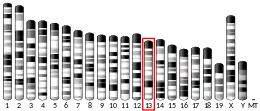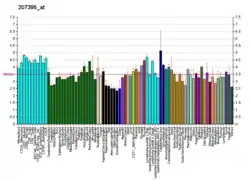| BTN1A1 | |||||||||||||||||||||||||||||||||||||||||||||||||||
|---|---|---|---|---|---|---|---|---|---|---|---|---|---|---|---|---|---|---|---|---|---|---|---|---|---|---|---|---|---|---|---|---|---|---|---|---|---|---|---|---|---|---|---|---|---|---|---|---|---|---|---|
| Identifiers | |||||||||||||||||||||||||||||||||||||||||||||||||||
| Aliases | BTN1A1, BT, BTN, BTN1, butyrophilin subfamily 1 member A1 | ||||||||||||||||||||||||||||||||||||||||||||||||||
| External IDs | OMIM: 601610 MGI: 103118 HomoloGene: 1312 GeneCards: BTN1A1 | ||||||||||||||||||||||||||||||||||||||||||||||||||
| |||||||||||||||||||||||||||||||||||||||||||||||||||
| |||||||||||||||||||||||||||||||||||||||||||||||||||
| |||||||||||||||||||||||||||||||||||||||||||||||||||
| |||||||||||||||||||||||||||||||||||||||||||||||||||
| |||||||||||||||||||||||||||||||||||||||||||||||||||
| Wikidata | |||||||||||||||||||||||||||||||||||||||||||||||||||
| |||||||||||||||||||||||||||||||||||||||||||||||||||
Butyrophilin subfamily 1 member A1 is a protein that in humans is encoded by the BTN1A1 gene.[5][6][7]
Butyrophilin (BTN) is the major protein associated with fat droplets in the milk. It is a member of the immunoglobulin superfamily. It may have a cell surface receptor function. The human butyrophilin gene is localized in the major histocompatibility complex (MHC) class I region of 6p and may have arisen relatively recently in evolution by the shuffling of exons between 2 ancestral gene families[7]
Function
Btn1a1 regulates the amount of lipids and size of droplets expressed in milk. When the gene is compromised in laboratory mice, approximately half the pups died within the first 20 days and the remainder were significantly under-weight. [8]
Link to multiple sclerosis
Butyrophilin has been presented as a potential antigen which may be similar enough to myelin oligodendrocyte glycoprotein (MOG) to spur the immune system to attack myelin in a process known as molecular or epitopic mimicry. This suggests that ingestion of butyrophilin in dairy products from cows and goats may be a potential trigger for multiple sclerosis. Independent studies by a group in Germany have reached similar conclusions.[9][10]
The German group have used heavy doses of butyrophilin on mice with an experimental model for multiple sclerosis called EAE. They have found that this strategy, called immune tolerance, reduces the effects of the disease.
References
- 1 2 3 GRCh38: Ensembl release 89: ENSG00000124557 - Ensembl, May 2017
- 1 2 3 GRCm38: Ensembl release 89: ENSMUSG00000000706 - Ensembl, May 2017
- ↑ "Human PubMed Reference:". National Center for Biotechnology Information, U.S. National Library of Medicine.
- ↑ "Mouse PubMed Reference:". National Center for Biotechnology Information, U.S. National Library of Medicine.
- ↑ Vernet C, Boretto J, Mattei MG, Takahashi M, Jack LJ, Mather IH, Rouquier S, Pontarotti P (Mar 1994). "Evolutionary study of multigenic families mapping close to the human MHC class I region". J Mol Evol. 37 (6): 600–12. doi:10.1007/bf00182746. PMID 8114113. S2CID 19054302.
- ↑ Tazi-Ahnini R, Henry J, Offer C, Bouissou-Bouchouata C, Mather IH, Pontarotti P (Jan 1998). "Cloning, localization, and structure of new members of the butyrophilin gene family in the juxta-telomeric region of the major histocompatibility complex". Immunogenetics. 47 (1): 55–63. doi:10.1007/s002510050326. PMID 9382921. S2CID 1873778.
- 1 2 "Entrez Gene: BTN1A1 butyrophilin, subfamily 1, member A1".
- ↑ Sherry L. Ogg; Anne K. Weldon; Lorraine Dobbie; Andrew J. H. Smith; Ian H. Mather (6 July 2004). "Expression of butyrophilin (Btn1a1) in lactating mammary gland is essential for the regulated secretion of milk–lipid droplets". Proceedings of the National Academy of Sciences. 101 (27): 10084–10089. Bibcode:2004PNAS..10110084O. doi:10.1073/pnas.0402930101. PMC 454168. PMID 15226505.
- ↑ Stefferl A, Schubart A, Storch M, Amini A, Mather I, Lassmann H, Linington C (September 2000). "Butyrophilin, a milk protein, modulates the encephalitogenic T cell response to myelin oligodendrocyte glycoprotein in experimental autoimmune encephalomyelitis". J. Immunol. 165 (5): 2859–65. doi:10.4049/jimmunol.165.5.2859. PMID 10946319.
- ↑ Guggenmos J, Schubart AS, Ogg S, Andersson M, Olsson T, Mather IH, Linington C (January 2004). "Antibody cross-reactivity between myelin oligodendrocyte glycoprotein and the milk protein butyrophilin in multiple sclerosis". J. Immunol. 172 (1): 661–8. doi:10.4049/jimmunol.172.1.661. PMID 14688379.
External links
- Human BTN1A1 genome location and BTN1A1 gene details page in the UCSC Genome Browser.
Further reading
- Mather IH, Jack LJ (1994). "A review of the molecular and cellular biology of butyrophilin, the major protein of bovine milk fat globule membrane". J. Dairy Sci. 76 (12): 3832–50. doi:10.3168/jds.s0022-0302(93)77726-7. PMID 8132890.
- Heid HW, Winter S, Bruder G, et al. (1983). "Butyrophilin, an apical plasma membrane-associated glycoprotein characteristic of lactating mammary glands of diverse species". Biochim. Biophys. Acta. 728 (2): 228–38. doi:10.1016/0005-2736(83)90476-5. PMID 6830779.
- Sato T, Takio K, Kobata A, et al. (1995). "Site-specific glycosylation of bovine butyrophilin". J. Biochem. 117 (1): 147–57. doi:10.1093/oxfordjournals.jbchem.a124702. PMID 7775382.
- Taylor MR, Peterson JA, Ceriani RL, Couto JR (1996). "Cloning and sequence analysis of human butyrophilin reveals a potential receptor function". Biochim. Biophys. Acta. 1306 (1): 1–4. doi:10.1016/0167-4781(19)60000-x. PMID 8611614.
- Cavaletto M, Giuffrida MG, Giunta C, et al. (1999). "Multiple forms of lactadherin (breast antigen BA46) and butyrophilin are secreted into human milk as major components of milk fat globule membrane". J. Dairy Res. 66 (2): 295–301. doi:10.1017/s0022029999003507. PMID 10376248. S2CID 29228427.
- Shibui A, Tsunoda T, Seki N, et al. (1999). "Cloning, expression analysis, and chromosomal localization of a novel butyrophilin-like receptor". J. Hum. Genet. 44 (4): 249–52. doi:10.1007/s100380050153. PMID 10429365.
- Rhodes DA, Stammers M, Malcherek G, et al. (2001). "The cluster of BTN genes in the extended major histocompatibility complex". Genomics. 71 (3): 351–62. doi:10.1006/geno.2000.6406. PMID 11170752.
- McManaman JL, Palmer CA, Wright RM, Neville MC (2003). "Functional regulation of xanthine oxidoreductase expression and localization in the mouse mammary gland: evidence of a role in lipid secretion". J. Physiol. 545 (Pt 2): 567–79. doi:10.1113/jphysiol.2002.027185. PMC 2290700. PMID 12456835.
- Strausberg RL, Feingold EA, Grouse LH, et al. (2003). "Generation and initial analysis of more than 15,000 full-length human and mouse cDNA sequences". Proc. Natl. Acad. Sci. U.S.A. 99 (26): 16899–903. Bibcode:2002PNAS...9916899M. doi:10.1073/pnas.242603899. PMC 139241. PMID 12477932.
- Mungall AJ, Palmer SA, Sims SK, et al. (2003). "The DNA sequence and analysis of human chromosome 6". Nature. 425 (6960): 805–11. Bibcode:2003Natur.425..805M. doi:10.1038/nature02055. PMID 14574404.
- Gerhard DS, Wagner L, Feingold EA, et al. (2004). "The status, quality, and expansion of the NIH full-length cDNA project: the Mammalian Gene Collection (MGC)". Genome Res. 14 (10B): 2121–7. doi:10.1101/gr.2596504. PMC 528928. PMID 15489334.
- Woo JS, Imm JH, Min CK, et al. (2006). "Structural and functional insights into the B30.2/SPRY domain". EMBO J. 25 (6): 1353–63. doi:10.1038/sj.emboj.7600994. PMC 1422157. PMID 16498413.




